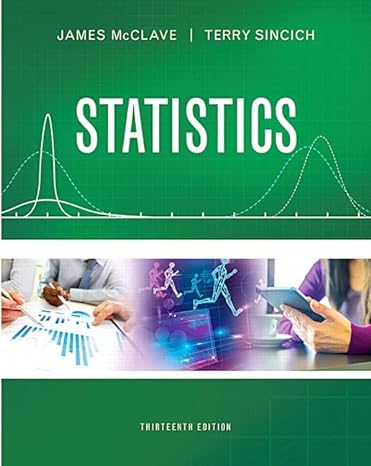Instructing English-as-a-first-language learners. A study published in the journal Applied Linguistics (Feb. 2014) investigated the effects of
Question:
Instructing English-as-a-first-language learners. A study published in the journal Applied Linguistics (Feb. 2014)
investigated the effects of implicit and explicit classroom interventions during the instruction of Japanese to Englishas-
a-first-language (EFL) students. EFL students at a Japanese university were divided into implicit (n = 44) and explicit (n = 37) groups. [Note: Implicit instruction emphasized reading comprehension only, while explicit instruction included both deductive and inductive activities designed to bring learners’ attention to rules and patterns.] Following an instruction period, all students were tested on their ability to use epistemic terms such as think, maybe, seem, and may in an essay. A summary of the epistemic type scores for the two groups of EFL students are provided in the table on p. 421.
a. A 95% confidence interval for mImp, the true mean epistemic type score of EFL students taught with implicit instruction, is (5.17, 6.63). Based on this interval, is there evidence that mImp differs from 6?
b. Use the summary information in the table to test the hypothesis that mImp differs from 6 at a = .05.
c. Explain why the inferences in parts a and b agree.
d. A 95% confidence interval for mExp, the true mean epistemic type score of EFL students taught with explicit instruction, is (8.67, 10.73). Based on this interval, is there evidence that mExp differs from 6?
e. Use the summary information in the table to test the hypothesis that mExp differs from 6 at a = .05.
f. Explain why the inferences in parts d and e agree.
Step by Step Answer:

Statistics Plus New Mylab Statistics With Pearson Etext Access Card Package
ISBN: 978-0134090436
13th Edition
Authors: James Mcclave ,Terry Sincich





